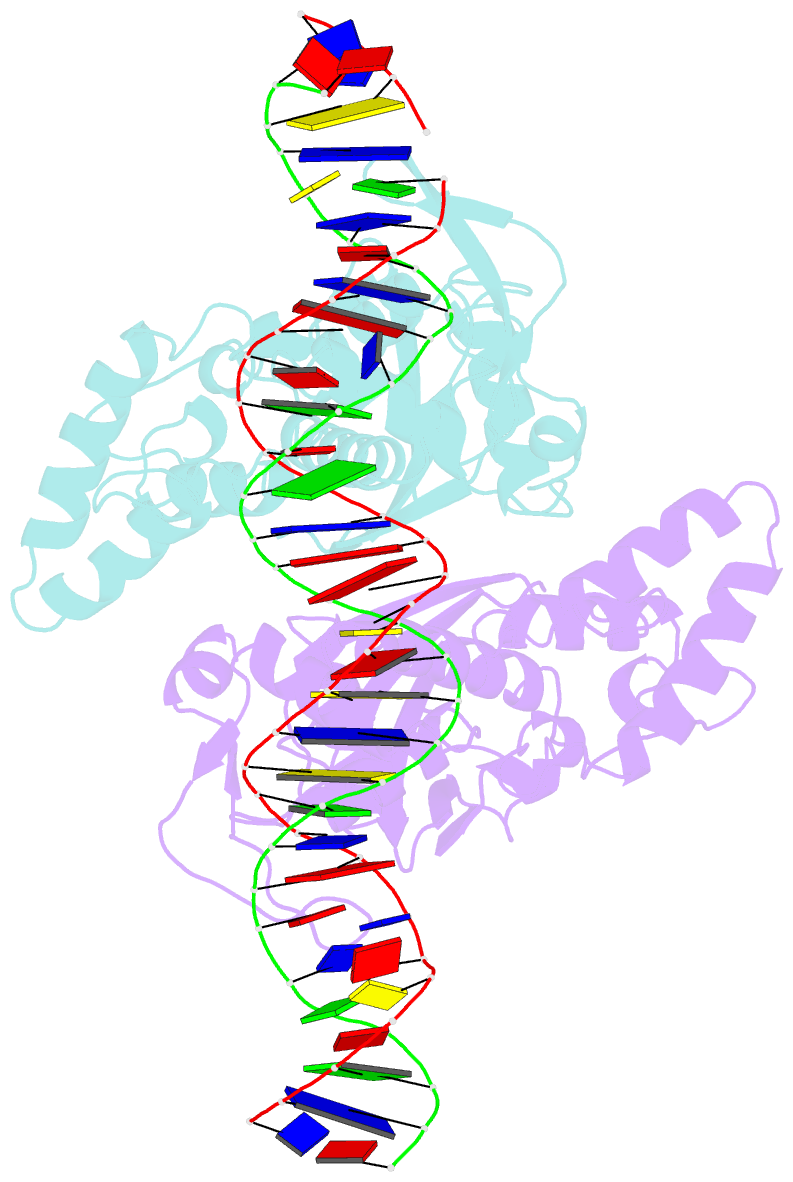Summary information and primary citation
- PDB-id
- 7q94; SNAP-derived features in text and JSON formats;
DNAproDB
- Class
- transcription
- Method
- X-ray (4.3 Å)
- Summary
- Crystal structure of agrobacterium tumefaciens nadq, DNA complex.
- Reference
- Minazzato G, Gasparrini M, Heroux A, Sernova NV, Rodionov DA, Cianci M, Sorci L, Raffaelli N (2022): "Bacterial NadQ (COG4111) is a Nudix-like, ATP-responsive regulator of NAD biosynthesis." J.Struct.Biol., 214, 107917. doi: 10.1016/j.jsb.2022.107917.
- Abstract
- Nicotinamide-adenine dinucleotide (NAD) is centrally important to metabolic reactions that involve redox chemistry. In bacteria, NAD biosynthesis is controlled by different transcription factors, depending on the species. Among the four regulators identified so far, the protein NadQ is reported to act as a repressor of the de novo NAD biosynthetic pathway in proteobacteria. Using comparative genomics, a systematic reconstruction of NadQ regulons in thousands of fully sequenced bacterial genomes has been performed, confirming that NadQ is present in α-proteobacteria and some β- and γ-proteobacteria, including pathogens like Bordetella pertussis and Neisseria meningitidis, where it likely controls de novo NAD biosynthesis. Through mobility shift assay, the DNA binding activity of NadQ from Agrobacterium tumefaciens was experimentally validated and determined to be suppressed by ATP. The crystal structures of NadQ in native form and in complex with ATP were determined, indicating that NadQ is a dimer, with each monomer composed of an N-terminal Nudix domain hosting the effector binding site and a C-terminal winged helix-turn-helix domain that binds DNA. Within the dimer, we found one ATP molecule bound, at saturating concentration of the ligand, in keeping with an intrinsic asymmetry of the quaternary structure. Overall, this study provided the basis for depicting a working model of NadQ regulation mechanism.





